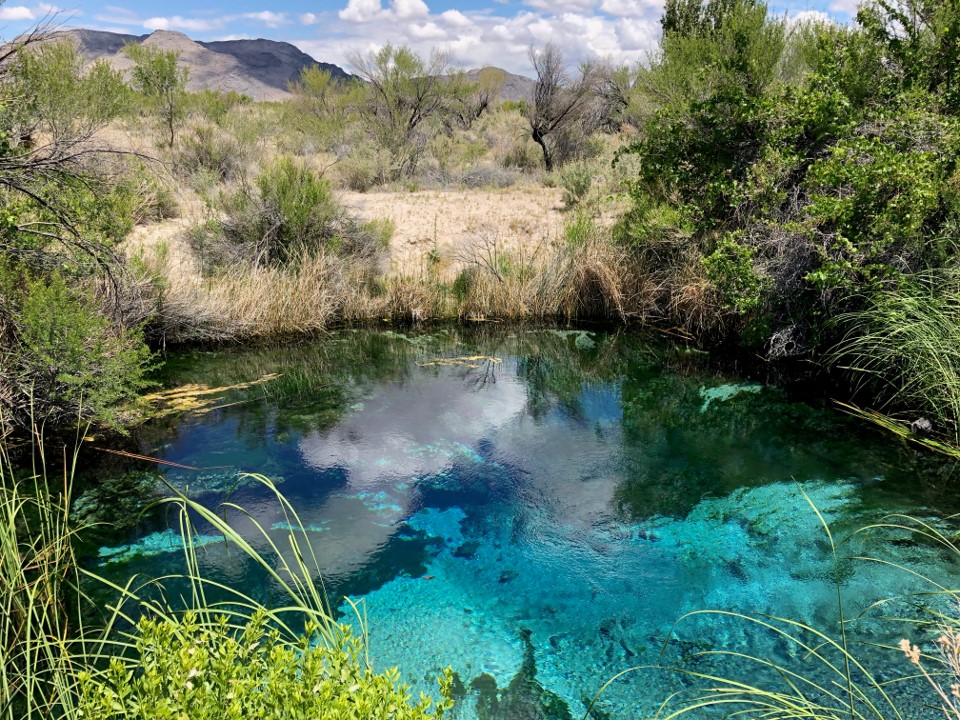Mining Company That Targeted Ash Meadows Wildlife Refuge Scraps Nevada Plans – Center for Biological Diversity

Report on the Withdrawal of the Ash Meadows Lithium Mining Project
Executive Summary
A proposed lithium mining project by Rover Critical Minerals at the Ash Meadows National Wildlife Refuge in Nevada has been terminated following significant opposition. The company, now rebranded as Stockworks Gold, Inc., has shifted its focus to a gold mining venture in Brazil. This development represents a significant outcome for environmental preservation, directly aligning with several United Nations Sustainable Development Goals (SDGs), particularly those concerning biodiversity, water resources, and sustainable communities.
Project Cancellation and its Contribution to Sustainable Development Goals (SDGs)
The cessation of the proposed mining activities at Ash Meadows is a noteworthy event in the context of global sustainability efforts. The decision directly supports the achievement of key SDG targets by prioritizing environmental and community well-being over resource extraction in a sensitive area.
SDG 15: Life on Land
The primary impact of the project’s cancellation is the protection of a unique and fragile ecosystem.
- Halting Biodiversity Loss: The proposed open-pit mine posed a direct threat to the habitat of numerous endangered and endemic species within the Ash Meadows refuge. Its withdrawal prevents habitat destruction and supports the goal of halting biodiversity loss.
- Protecting Terrestrial Ecosystems: Ash Meadows, a desert oasis, is a critical ecosystem. The decision to forgo mining activities ensures the preservation of this unique landscape, in line with targets for the conservation and sustainable use of terrestrial ecosystems.
SDG 6: Clean Water and Sanitation
The defense of the region’s water resources was a central component of the opposition campaign.
- Protection of Water-Related Ecosystems: The project’s termination safeguards the fragile spring systems and groundwater that sustain the Ash Meadows oasis. This action directly contributes to the protection of water-related ecosystems, a key target of SDG 6.
- Ensuring Water Quality: Mining operations, particularly open-pit mines, carry a high risk of water contamination. Preventing the project ensures the continued integrity of the local water supply for both wildlife and the surrounding community.
SDG 11: Sustainable Cities and Communities & SDG 17: Partnerships for the Goals
The outcome was achieved through a powerful coalition of local and national stakeholders, demonstrating a model for community-driven environmental protection.
- Community-Led Action: The unanimous opposition from the Amargosa Valley community at public meetings was a decisive factor, highlighting the power of local engagement in protecting natural and cultural heritage.
- Effective Partnerships: The success was a result of a strategic partnership between conservation groups (Center for Biological Diversity, Amargosa Conservancy), local governments, and Tribal governments. This collaboration exemplifies the multi-stakeholder partnerships essential for achieving the SDGs.
Chronology of Events and Institutional Response
The withdrawal followed a series of legal and administrative actions that underscore the importance of strong institutions (SDG 16) in upholding environmental law.
- The Bureau of Land Management (BLM) initially approved Rover Metals’ proposal for exploratory drilling in 2023.
- A lawsuit was filed by a coalition of conservation, Tribal, and local government groups to block the project.
- In response to the legal challenge, the BLM withdrew its authorization for the drilling.
- The Biden administration enacted a temporary two-year withdrawal from new mining claims in the area, pending consideration of a longer-term ban.
- Rover Critical Minerals subsequently abandoned the project, removing it from its corporate portfolio.
Ongoing Threats and Future Considerations
Despite this victory for conservation, the region surrounding Ash Meadows remains under pressure from extractive industries. Continued vigilance is required to ensure long-term protection and uphold the principles of sustainable development.
- An exploratory drilling project has been approved in California, approximately two miles from the refuge.
- Belgian mining company Lhoist is reportedly considering an expansion of its nearby clay mining operations.
The successful campaign against the lithium project serves as a clear message to industry that development proposals threatening critical ecosystems and community well-being will face determined opposition, reinforcing the local commitment to the Sustainable Development Goals.
1. Which SDGs are addressed or connected to the issues highlighted in the article?
SDG 15: Life on Land
- This goal is central to the article, which focuses on the protection of a terrestrial and freshwater ecosystem, the Ash Meadows National Wildlife Refuge. The proposed mining project posed a direct “existential threat to dozens of endangered species” and the “degradation of natural habitats,” which are core concerns of SDG 15.
SDG 6: Clean Water and Sanitation
- The article mentions that the community campaign was “in defense of water, wildlife and home.” Ash Meadows is described as an “oasis,” indicating its reliance on critical water resources. Mining activities, particularly an open-pit mine, threaten to contaminate or deplete these water sources, making SDG 6 relevant to protecting water-related ecosystems.
SDG 16: Peace, Justice and Strong Institutions
- This goal is addressed through the actions taken by various groups and government bodies. The article details how “Conservation groups and Tribal and local governments sued to block the project,” demonstrating the use of legal systems to ensure environmental justice. Furthermore, the government’s response, including the Bureau of Land Management (BLM) withdrawing its authorization and the Biden administration “enacting a temporary two-year withdrawal from mining claims,” reflects the functioning of responsive institutions. The active participation of the community, who “unanimously expressed their opposition,” highlights the importance of inclusive decision-making.
SDG 12: Responsible Consumption and Production
- The conflict revolves around the extraction of natural resources (lithium). The opposition to the “disastrous project” and the “open pit mine” is a rejection of an unsustainable method of resource extraction. The successful campaign to halt the project promotes the sustainable management of natural resources, a key aspect of SDG 12.
2. What specific targets under those SDGs can be identified based on the article’s content?
SDG 15: Life on Land
- Target 15.5: “Take urgent and significant action to reduce the degradation of natural habitats, halt the loss of biodiversity and, by 2020, protect and prevent the extinction of threatened species.” This target is directly relevant as the article states the proposed mine was within “habitat for numerous endangered species” and posed an “existential threat to dozens of endangered species.” The successful opposition to the mine is a direct action to prevent this outcome.
- Target 15.1: “By 2020, ensure the conservation, restoration and sustainable use of terrestrial and inland freshwater ecosystems and their services…” The article is entirely focused on the conservation of the Ash Meadows National Wildlife Refuge, a unique desert oasis ecosystem. The legal and political actions taken were to ensure its protection from mining.
SDG 6: Clean Water and Sanitation
- Target 6.6: “By 2020, protect and restore water-related ecosystems, including mountains, forests, wetlands, rivers, aquifers and lakes.” The community’s “defense of water” and the protection of the “oasis” directly align with this target of safeguarding water-related ecosystems from the threats posed by the proposed mining project.
SDG 16: Peace, Justice and Strong Institutions
- Target 16.3: “Promote the rule of law at the national and local levels and ensure equal access to justice for all.” This is demonstrated by the fact that “Conservation groups and Tribal and local governments sued to block the project,” using the legal framework to challenge a government decision and protect their interests.
- Target 16.7: “Ensure responsive, inclusive, participatory and representative decision-making at all levels.” The article highlights this through the “raucous public meeting in Amargosa Valley, where townspeople unanimously expressed their opposition” and the “locally driven campaign,” which ultimately led to the BLM withdrawing its authorization and the administration enacting a mining ban.
SDG 12: Responsible Consumption and Production
- Target 12.2: “By 2030, achieve the sustainable management and efficient use of natural resources.” The conflict over the proposed lithium mine is a clear example of a debate over sustainable management. The opposition successfully argued that an “open pit mine within Ash Meadows’ borders” was not a sustainable way to manage the area’s natural resources, leading to the project’s cancellation.
3. Are there any indicators mentioned or implied in the article that can be used to measure progress towards the identified targets?
SDG 15: Life on Land
- Implied Indicator for Target 15.5: The status and number of threatened species. The article mentions “numerous endangered species” and “dozens of endangered species.” Preventing their extinction by halting the threatening project is a measure of progress.
- Implied Indicator for Target 15.1: The legal and administrative protection status of an important biodiversity area. The “temporary two-year withdrawal from mining claims” and the consideration of a “longer mining ban” are direct indicators of increased protection for the Ash Meadows National Wildlife Refuge.
SDG 16: Peace, Justice and Strong Institutions
- Implied Indicator for Target 16.3: The successful use of the legal system to challenge administrative decisions. The lawsuit that resulted in the BLM withdrawing its authorization serves as a qualitative indicator of access to justice.
- Implied Indicator for Target 16.7: The existence of public consultations and the government’s response to them. The article’s description of the “public meeting” where “townspeople unanimously expressed their opposition” and the subsequent government actions to halt the project serve as indicators of a responsive and participatory decision-making process.
SDG 12: Responsible Consumption and Production
- Implied Indicator for Target 12.2: The cancellation of projects deemed environmentally unsustainable. The fact that the lithium project “has been scrubbed from the website’s project list” after widespread opposition is a clear indicator of a decision made in favor of more sustainable management of natural resources.
4. Table of SDGs, Targets, and Indicators
| SDGs | Targets | Indicators Identified in the Article |
|---|---|---|
| SDG 15: Life on Land | 15.5: Protect and prevent the extinction of threatened species.
15.1: Ensure the conservation of terrestrial and inland freshwater ecosystems. |
– Number of endangered species threatened by the project (“dozens of endangered species”).
– Implementation of a “temporary two-year withdrawal from mining claims” to protect the wildlife refuge. |
| SDG 6: Clean Water and Sanitation | 6.6: Protect and restore water-related ecosystems. | – Community action taken “in defense of water” to protect the Ash Meadows “oasis.” |
| SDG 16: Peace, Justice and Strong Institutions | 16.3: Ensure equal access to justice.
16.7: Ensure responsive, inclusive, and participatory decision-making. |
– Filing of a lawsuit by conservation, Tribal, and local groups, leading to the withdrawal of project authorization.
– Unanimous opposition from townspeople at a public meeting, influencing government action. |
| SDG 12: Responsible Consumption and Production | 12.2: Achieve the sustainable management and efficient use of natural resources. | – The cancellation of the “disastrous” open-pit mining project due to its perceived unsustainability. |
Source: biologicaldiversity.org

What is Your Reaction?
 Like
0
Like
0
 Dislike
0
Dislike
0
 Love
0
Love
0
 Funny
0
Funny
0
 Angry
0
Angry
0
 Sad
0
Sad
0
 Wow
0
Wow
0



























;Resize=805#)



















































